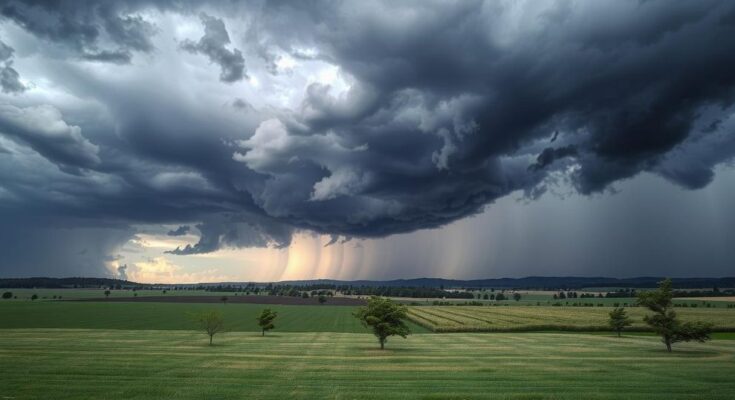A study reveals that cut-off lows are intensifying and shifting patterns due to climate change, occurring earlier in the year and leading to increased flood risks in regions like Canada and northern Europe. The report calls for natural flood defenses and infrastructure upgrades, alongside reduced emissions, to combat these storms effectively.
A recent study published in the journal Communications Earth & Environment highlights the increasing intensity of cut-off lows—slow-moving weather systems associated with heavy rainfall. Researchers from the Wegener Center at the University of Graz, along with UK and Italian scientists, assessed 18 climate models, indicating that these storms are moving northward and beginning earlier in the year, particularly affecting regions north of 40 degrees latitude and parts of East Asia. This shift poses significant challenges for communities already facing extreme weather events.
The implications of this changing rainfall pattern are concerning due to the potential for catastrophic flooding. Such storms have already caused extensive damage, as seen in the devastating 2021 floods in Germany’s Ahr Valley and subsequent events in Central Europe. The ability of regions to cope with prolonged rain is critical, as inadequate infrastructure may exacerbate flood risks, leading to severe humanitarian and economic dilemmas.
To counteract these challenges, experts emphasize the importance of both mitigating flood risks and adapting to wetter conditions. Douglas Maraun, project leader, suggests that implementing targeted strategies, such as restoring wetlands for natural flood defense and enhancing drainage systems, could significantly reduce the impacts of heavy rainfall. Furthermore, global efforts to transition from fossil fuel reliance to sustainable energy sources are vital for curbing climate change and ultimately reducing storm severity.
In summary, the emergence of more intense cut-off lows poses significant risks for various regions, necessitating urgent adaptation measures to manage potential floods. Researchers advocate for both structural advancements and global emission reductions to mitigate climate impacts. It is clear that proactive strategies today will greatly influence resilience against future weather challenges, ensuring communities are better prepared for the storms ahead.
Original Source: www.thecooldown.com




